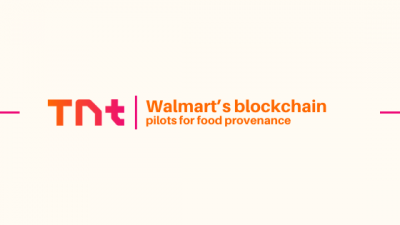
For decades, diamond buying followed a predictable script. Engagement rings came from traditional retailers. Value was tied to rarity. Consumers relied on the Four Cs without questioning where the stones came from or how they reached the showroom. Older generations trusted the system because they did not have access to more information.
Today’s jewelry buyers are very different. They are informed, connected, and unafraid to question long-standing industry norms. What used to be a quiet, opaque corner of the luxury world has become a subject of global discussion. The modern consumer does not simply ask whether a diamond is beautiful. They want to know its origin, its value, and whether the story behind it aligns with their personal beliefs.
This cultural awakening has triggered a shift the jewelry industry can no longer ignore. It is not a trend. It is a transition to a new era, one where lab-grown diamonds, transparent manufacturing, and direct-to-consumer brands are reshaping what luxury looks like.
This is the Great Diamond Shift, and it is powered not by marketing, but by knowledge.
The Information Advantage of Today’s Buyer
Previous generations bought diamonds based on trust in retailers and tradition. Modern buyers have something their parents and grandparents did not: access to information.
A single search can reveal:
- the true cost structure of fine jewelry
- how diamonds are sourced or grown
- the markups added by legacy brands
- comparisons between mined and lab-grown stones
- reviews from thousands of customers
- videos and photos of stones under magnification
This transparency has changed consumer expectations permanently. Buyers no longer accept mystery as part of the luxury experience. They want clarity, honesty, and value they can measure.
Knowledge has become the new status symbol, and consumers use it to make smarter, more intentional choices.
Lab-Grown Diamonds: The Catalyst of the Shift
The rise of lab-grown diamonds is at the center of this transformation. Once considered unconventional, they are now an industry standard embraced by designers, manufacturers, and customers around the world.
What today’s buyers understand that previous generations did not is simple: a lab-grown diamond is a real diamond. It has the same crystal structure, hardness, fire, and brilliance. The only difference is its origin.
This understanding has removed the stigma that once surrounded lab-grown stones and highlighted the limitations of the old narrative. When consumers discovered they could purchase a larger, higher-quality diamond with complete transparency about its creation, the traditional storyline lost its power.
The modern buyer is not rejecting mined diamonds. They are rejecting outdated assumptions.
Value Reimagined: What Matters to the Modern Consumer
Today’s buyers measure value differently from older generations. The past generation equated high price with prestige. Modern consumers view value as a combination of quality, ethics, transparency, and intelligent spending.
They understand:
- A higher price does not always equal higher quality.
- Markups in traditional retail often overshadow craftsmanship.
- Lab-grown diamonds offer exceptional beauty at a realistic cost.
- Brand heritage does not guarantee superior materials.
This shift in mindset has created a more empowered buyer, one who collects information before making a decision and expects brands to justify their pricing with facts rather than tradition.
When Luxury Becomes Transparent
The diamond industry once relied on layers of intermediaries. Mined stones could pass through five or more hands before reaching a shopper. Each stage added cost without adding value, and consumers rarely knew the full journey.
Modern buyers have realized that this system does not serve them. They prefer brands that offer:
- direct-to-consumer pricing
- controlled manufacturing
- visible craftsmanship
- clear material information
Brands like Leonids Jewelry, which has over twenty years of fine jewelry manufacturing experience, illustrate how transparency enhances trust. By crafting their pieces in-house and offering them directly through their website, they eliminate unnecessary layers and give customers clearer insight into what they are buying. Their lab-grown diamond fine jewelry highlights how modern production and traditional craftsmanship can coexist.
This openness aligns with the priorities of the modern luxury consumer: clarity, honesty, and design integrity.
The Influence of Millennials and Gen Z
Millennials initiated the Great Diamond Shift, but Gen Z is accelerating it. These generations are not driven by tradition. They evaluate purchases based on personal values, cultural relevance, and practicality.
They care about:
- ethical sourcing
- environmental responsibility
- minimal waste
- modern design
- daily wearability
- long-term value
Instead of viewing diamonds as symbols of status, they view them as symbols of identity. A ring or bracelet is not purchased to impress others but to express personal style.
This shift in mindset has made modern fine jewelry more diverse and more expressive. Slim bands, bezel settings, flexible bracelets, and understated solitaires have replaced the large statement styles of past decades.
Diamonds are no longer reserved only for engagement rings. They are part of everyday fashion.
The Power of Direct-to-Consumer Models
Another major difference between modern and older diamond buyers is access to factory-direct jewelry brands. Previous generations had no choice but to purchase from retailers who added significant markups. Today’s buyers can bypass those layers entirely.
Direct-to-consumer brands offer:
- lower, more honest pricing
- more control over craftsmanship
- faster design innovation
- custom options
- modern designs without traditional retail overhead
This model gives customers more information, more confidence, and better value. It also shifts the focus back to craftsmanship instead of branding.
Leonids Jewelry is one example of this modern approach. With in-house production and technical expertise, they design and craft lab-grown diamond rings, bracelets, earrings, and necklaces without relying on retailers. This direct model allows customers to purchase fine jewelry with clear insight into quality, materials, and pricing.
Older generations never had access to this level of transparency or direct craftsmanship. Today’s buyers do, and it has changed everything.
What Previous Generations Didn’t Know
The Great Diamond Shift is not simply about lab-grown diamonds. It is about the information that surrounds them.
Older generations did not know:
- how much diamonds were marked up
- how inconsistent sourcing could be
- how complex the supply chain was
- how many hands their jewelry passed through
- that lab-grown diamonds are chemically identical
- that technology could produce premium stones with complete traceability
Once this information became available, the traditional diamond narrative no longer held the same weight. Consumers realised they had choices. More importantly, they realised they had control.
The Future of Diamonds Is Knowledge Driven
The modern diamond buyer is shaping the future of the industry. Transparency, craftsmanship, and innovation have replaced secrecy and tradition as the core pillars of luxury.
Lab-grown diamonds symbolise this evolution. Factory-direct jewelry brands amplify it.
Consumers who understand the truth behind their jewelry make decisions based on clarity rather than assumptions.
The Great Diamond Shift is not about choosing sides between mined and lab-grown stones. It is about empowering buyers with information so they can choose jewelry that aligns with their values, budgets, aesthetics, and modern lifestyles.
This is what previous generations did not have.
This is what today’s buyer demands.
And this is what will guide the jewelry industry forward.
Information contained on this page is provided by an independent third-party content provider. Binary News Network and this Site make no warranties or representations in connection therewith. If you are affiliated with this page and would like it removed please contact [email protected]



Comments